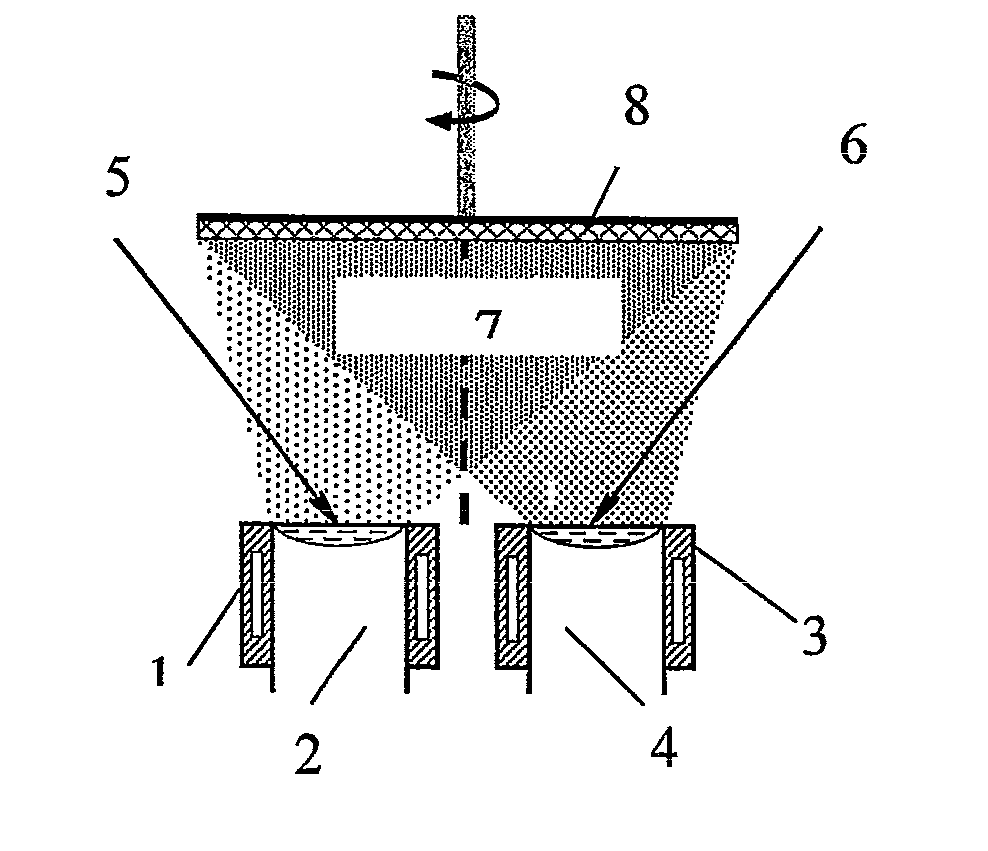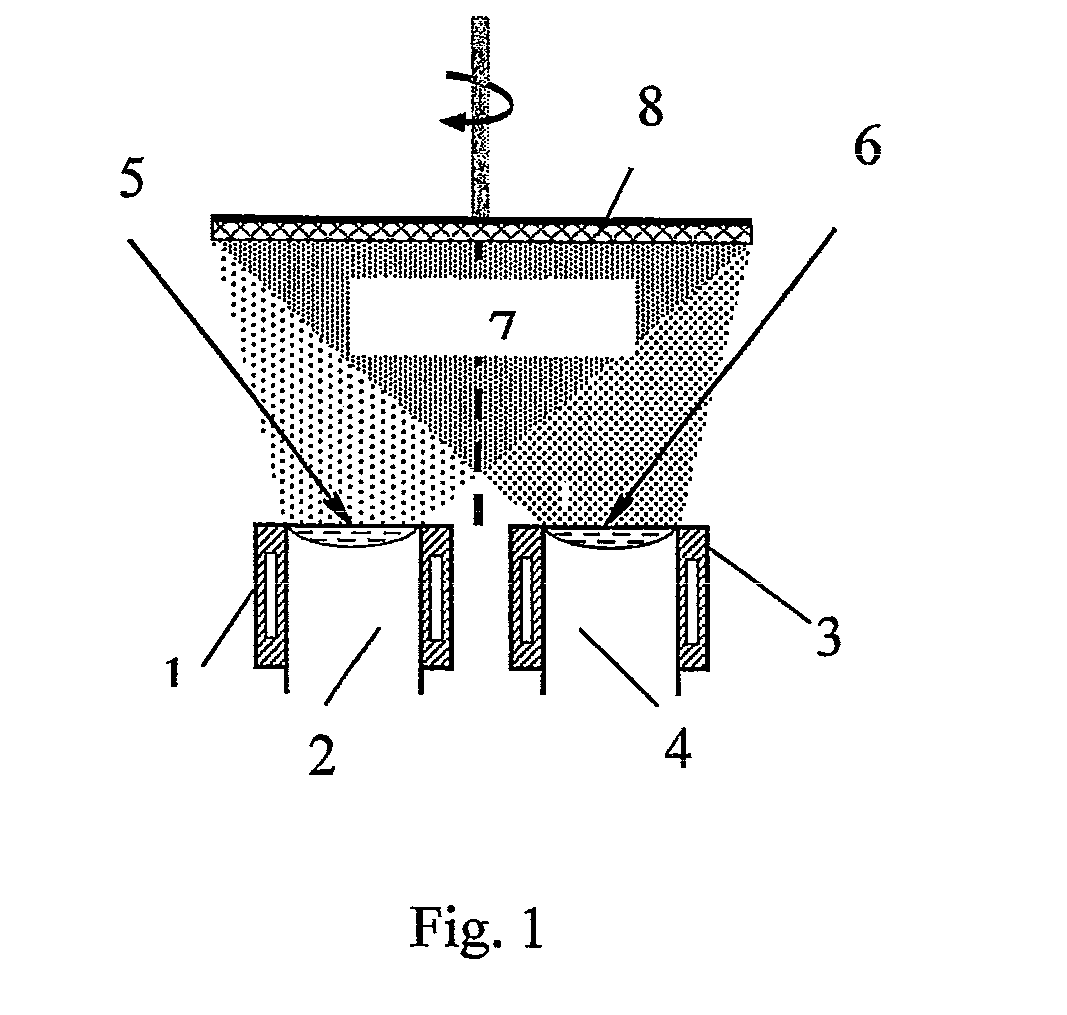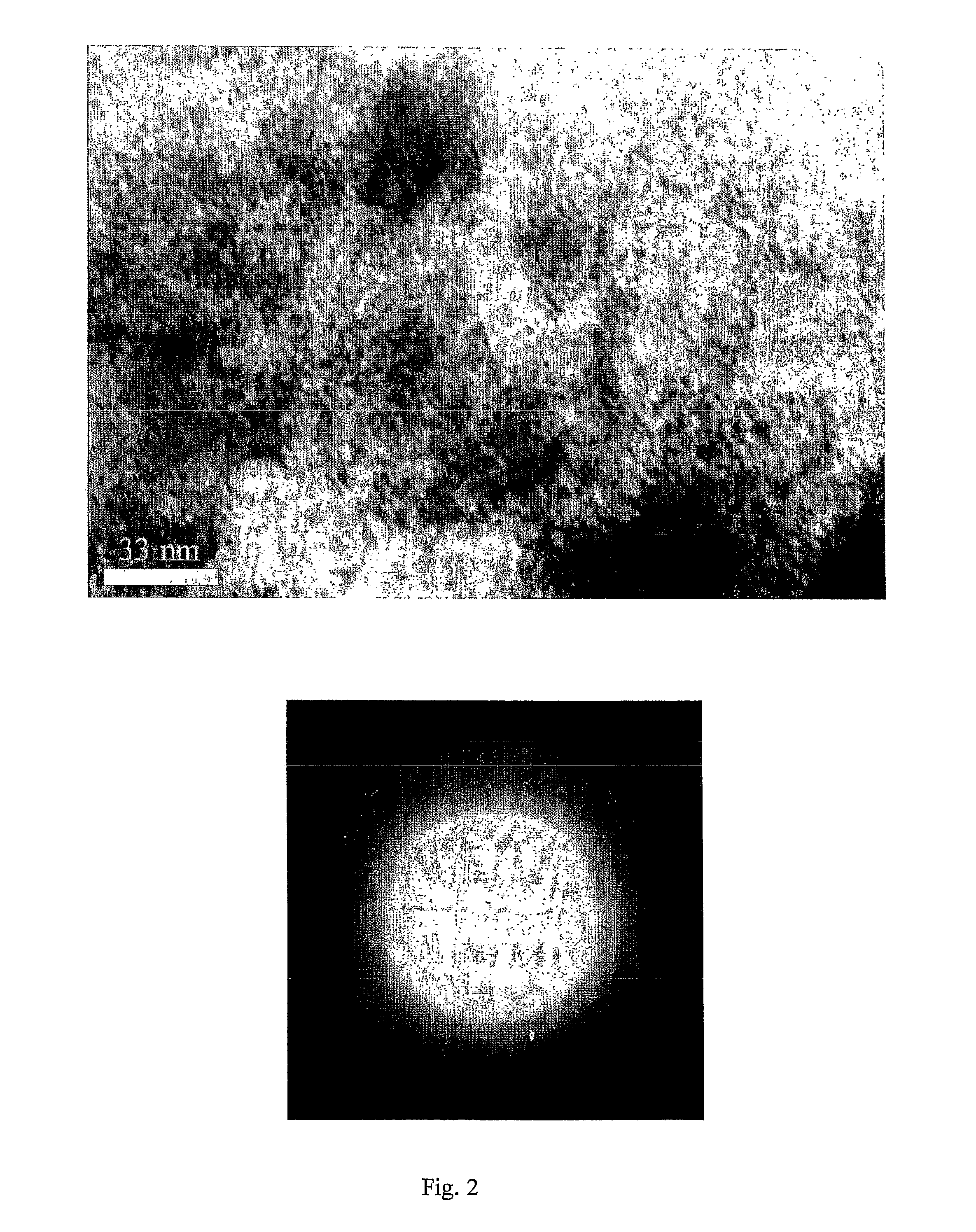Method for producing nanoparticles for magnetic fluids by electron-beam evaporation and condensation in vacuum, a magnetic fluid producing method and magnetic fluid produced according to said method
a technology of electron beam and magnetic fluid, which is applied in the direction of magnetic bodies, crystal growth process, transportation and packaging, etc., can solve the problems of non-magnetic organic nanoparticles, large widening of the range of produced particle dimensions, and not allowing the evaporation of high-temperature inorganic magnetic materials
- Summary
- Abstract
- Description
- Claims
- Application Information
AI Technical Summary
Benefits of technology
Problems solved by technology
Method used
Image
Examples
example 1
[0029]A method of producing the nanoparticles for magnetic fluid was embodied in a laboratory-production unit UE-193. A rod 2 of compacted Fe3O4 of 48.5 mm diameter and 110 mm height was placed into one cylindrical water-cooled crucible 1 of 50 mm inner diameter (FIG. 1) and rod 4 of NaCl was placed into the other adjacent crucible 3, respectively. A vacuum of 1.33-2.6×10−2 Pa was created in the chamber. The surfaces of both rods were heated by electron beam guns 5 and 6 up to melting, which resulted in formation of mixed vapour flow 7 of Fe3O4 and NaCl, which was condensed on water-cooled substrate 8 having the temperature of 30° C. After 30 minutes of operation power supply of electron beam guns 5 and 6 was switched off and the process was completed. Evaporation rate of Fe3O4 was 0.40 g / min, evaporation rate of NaCl was four times higher. As a result, a condensate of a composition of Fe3O4 nanoparticles in NaCl was produced.
[0030]A method of producing the magnetic fluid was implem...
example 2
[0032]A method of producing the nanoparticles for magnetic fluid was implemented in a laboratory-production unit UE-193. A rod 2 of compacted Fe3O4 of 48.5 mm diameter and 110 mm height was placed into one cylindrical water-cooled crucible 1 of 50 mm inner diameter (FIG. 1), and rod 4 of KCl was placed into the second adjacent crucible 3, respectively. A vacuum of 1.33-2.6×10−2 Pa was created in the chamber. The surfaces of both the rods were heated by electron beam guns 5 and 6 up to melting, which resulted in formation of mixed vapour flow 7 of Fe3O4 and KCl, which was condensed onto a water-cooled substrate 8 having the temperature of 210° C. After 30 minutes of operation, power of electron beam guns 5 and 6 was switched off, and the process was completed. Fe3O4 evaporation rate was equal to 0.45 g / min, and KCl evaporation rate was 4.5 times higher. As a result, a condensate of the composition of Fe3O4 particles in KCl was produced.
[0033]A method of producing the magnetic fluid w...
PUM
| Property | Measurement | Unit |
|---|---|---|
| size | aaaaa | aaaaa |
| temperature | aaaaa | aaaaa |
| temperature | aaaaa | aaaaa |
Abstract
Description
Claims
Application Information
 Login to View More
Login to View More - R&D
- Intellectual Property
- Life Sciences
- Materials
- Tech Scout
- Unparalleled Data Quality
- Higher Quality Content
- 60% Fewer Hallucinations
Browse by: Latest US Patents, China's latest patents, Technical Efficacy Thesaurus, Application Domain, Technology Topic, Popular Technical Reports.
© 2025 PatSnap. All rights reserved.Legal|Privacy policy|Modern Slavery Act Transparency Statement|Sitemap|About US| Contact US: help@patsnap.com



